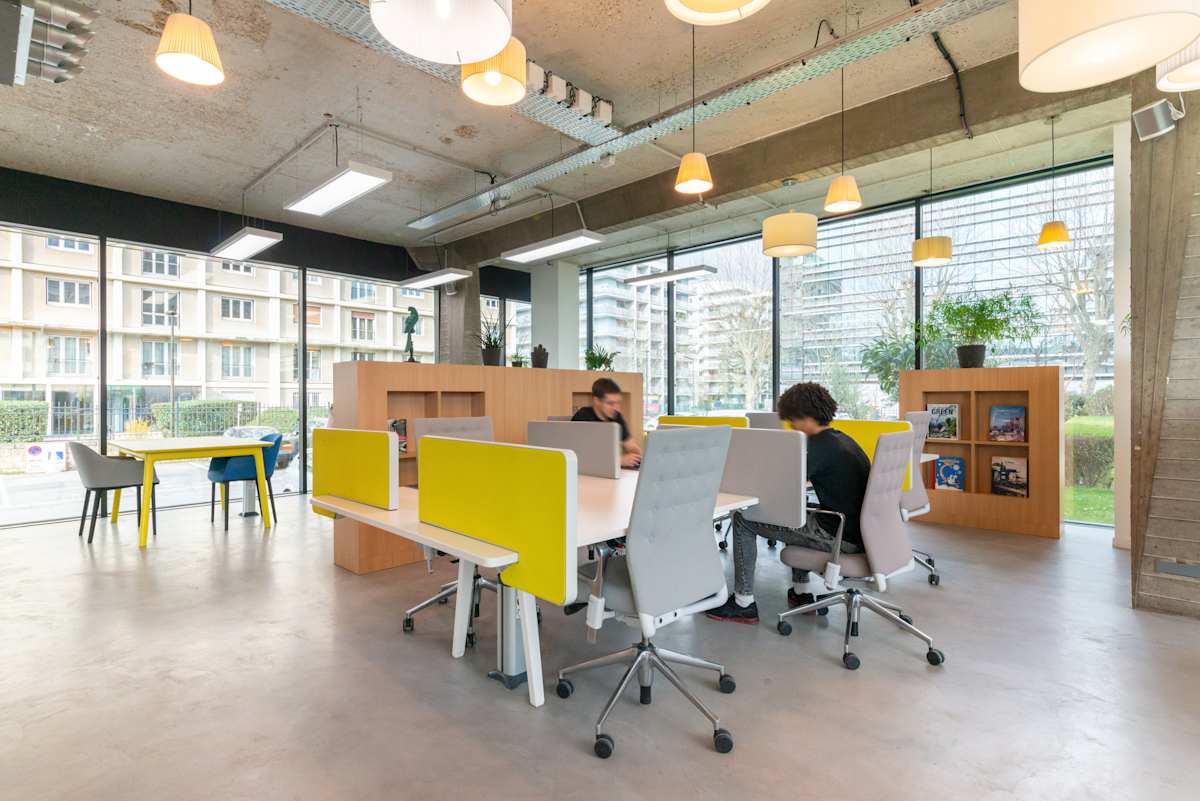Landmark report reveals hybrid working can reduce carbon emissions by up to 70% in the UK and up to 87% in the U.S.
- New research by IWG in partnership with Arup reveals working closer to home can significantly reduce carbon emissions in major cities across UK and USA
- The study identified carbon reductions of up to 70% in Manchester and 87% in Los Angeles
- Daily commuting to city centre offices has the biggest carbon footprint of any way of working
- Splitting time between a local workspace / office, working from home and occasional trips to a city centre HQ offers greatest carbon savings
- Swapping the car for a bike and upgrading offices to higher environmental standards also substantially reduces carbon footprint
Hybrid working can facilitate major carbon savings and has the potential for significant impact on the climate crisis, according to a new study by IWG and Arup.
The study measured the environmental impact of hybrid working, based on both building and transport emissions, on six cities across the US and UK with a deep dive on two major carbon contributors – London and LA. Others examined were New York City, Atlanta, Manchester and Glasgow.
All six cities showed the potential for huge carbon savings through the widespread adoption of hybrid working, which has rapidly expanded amongst white collar workers, who are now using the available technology to work where is most convenient and they are most productive.
Cities in the U.S. showed the largest potential carbon savings when also taking transport into consideration, due to the prevalence of commuting by car, with Atlanta (90% reduction) just edging out Los Angeles (87%) and New York (82%).
The potential carbon savings remain significant for UK cities with Glasgow (80%), Manchester (70%) and London (49%) all showing potential to benefit from workers reducing their commutes and working closer to home as part of a hybrid model.
IWG’s study with Arup compared different working scenarios for white-collar workers including:
- Exclusively from city centre workspaces
- From city centre workspaces and local workspaces
- From city centre workspaces and home
- A combination of all three
The team looked at the total emissions per worker based on transport, heating, cooling, lighting, energy use and more, to understand the climate impact.
The impact of the commute
A traditional five-day commute into a city centre has the biggest carbon footprint of all. In the UK in 2020, 25% of carbon emissions came from the transport sector, the most of any sector. In London specifically, roughly one in three people drive to work. Nationwide, this figure rises to approximately two in three. Per capita transport emissions in the U.S. are 2.5 times higher than the UK due to the adoption of larger, less fuel-efficient vehicles and low public transport ridership in all but a handful of cities.
The study found that in London, carbon emissions were reduced by 49% for those mixing time between a city centre HQ and local workspace, and 43% lower when splitting time between a local workspace and home, when compared to a traditional 5-day commuting pattern. They key driver in emissions reductions was distance; when workers more frequently stay near home, their emissions are lessened.
Local buildings offer carbon savings
Compared with offices in the city centre, local workspaces were found to have less emissions per square meter of floor area. Crucially, local workspaces have higher utilisation rates, and therefore, each person is responsible for less emissions than a central office location.
Employees benefit from hybrid working
Hybrid working is proving to be especially attractive for employees, with 88 per cent of workers saying flexible working was important in a new role to save money and achieve a better work/life balance. By living and working closer to home, hybrid working helps people be healthier and more productive. In a similar survey of HR professionals in the US, IWG found that the overwhelming majority (94%) use hybrid working to recruit new talent, with 93% saying it is a key tool for them. Not only does hybrid working provide health benefits, analysis by IWG also highlights the extent of the savings that working locally can offer hybrid workers.
Employees who have optimised their working habits like this are leading more localised lives, living and working closer to home, making them healthier and more productive. Analysis by IWG highlights the extent of the savings that working locally can offer hybrid workers. Someone based in Cambridge – which has seen a huge increase in local working over the past year – could save up to £2,931*** a year by working from Cambridge-based workspace instead of a London HQ just one day a week, with this figure increasing to £8,793 by working locally three days a week.
Mark Dixon, CEO of IWG, commented:
“This new research reveals we have an extraordinary opportunity to radically reduce humanity’s negative environmental impact by encouraging the adoption of hybrid working. Five-day commuting to city centre offices has the largest carbon footprint of any working model.
“Simply spending less time in or travelling to a city centre drives a drop in emissions from buildings and vehicles alike. Allowing people to work close to home, enabling them to split their time between home and a local workplace, has the potential to reduce a worker’s work-related carbon emissions by 70%.
“The single biggest change we can all make right now is to provide people with the choice to work closer to where they need to be, and with lower impact on the environment.. And that’s down to all of us. The results of our research with Arup show clearly that given the right will this is within our power – right now.”
As IWG reaches its highest-ever network footprint of over 65m sq.ft, it is committed to building its network by adding up to 1,000 locations over the next year. By adding locations closer to workers’ homes, IWG will help reduce the amount of carbon used in long commutes, as transport emissions are the biggest source of pollution in both the USA and UK[1]. The company is on track to be carbon neutral during the course of 2023 and received an upgraded rating to AA from the MSCI.
Matthew Dillon, Director of City Economics and Planning at Arup said:
"This research clearly shows that changing our behaviour is key to achieving our carbon targets. We can choose to walk and cycle, and to make more journeys by public transport. Governments must also choose to invest in these networks, and use them to secure both environmental benefits and economic growth."
[1] US Environmental Protection Agency (2022); UK Department for Business, Energy & Industrial Strategy. (2020)






